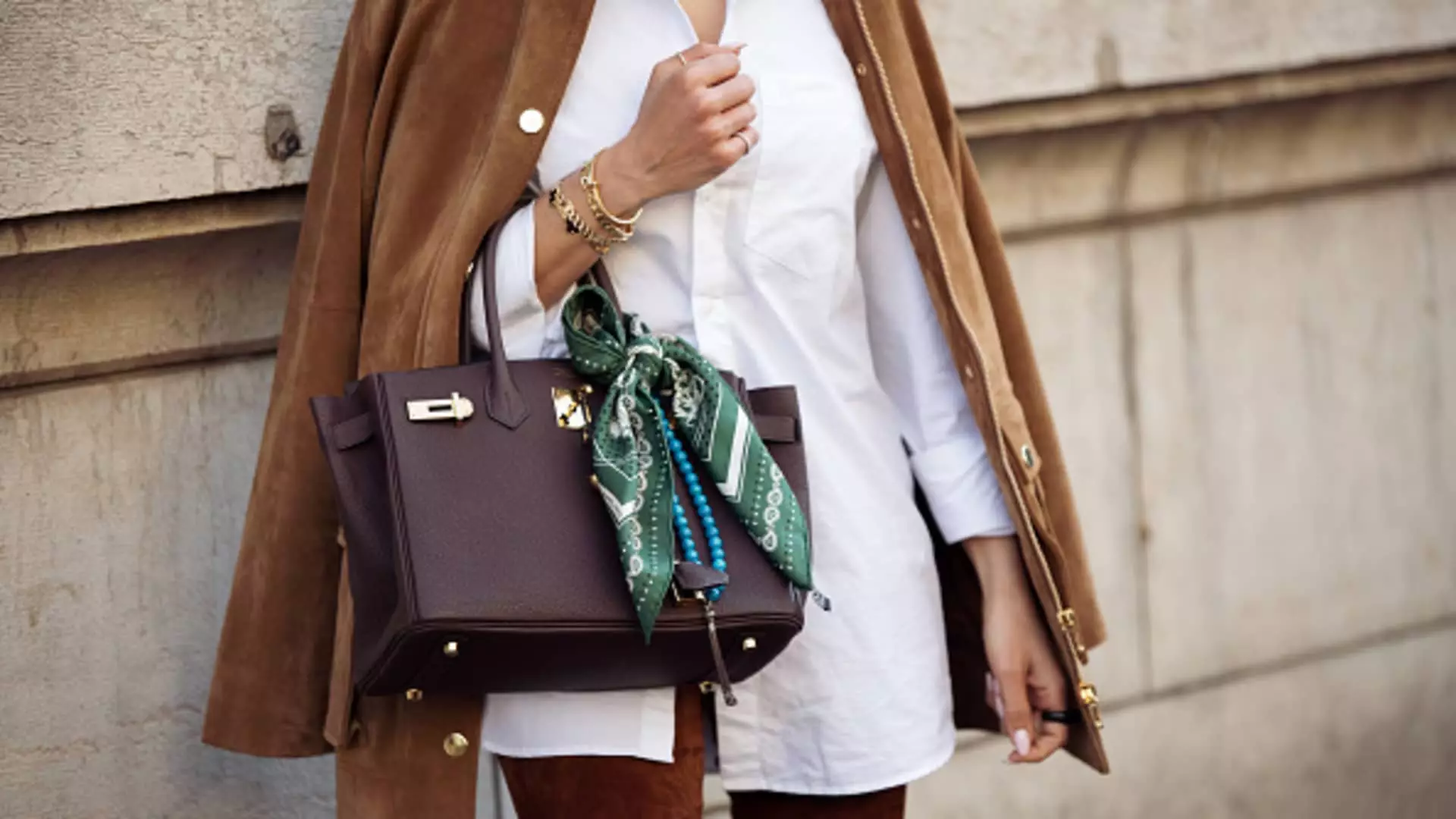In a world where high-end luxury is often equated with exclusivity and opulence, Hermès has recently made a rather startling announcement that has sent ripples through the fashion industry and beyond. Starting in May, the iconic French brand will raise its prices in the United States to counteract the tariffs imposed by the Trump administration. This move, positioned as a means to ensure that the brand remains profitable while facing increasing import costs, raises exceedingly pertinent questions about how economic policies can profoundly affect consumer choices and market dynamics among luxury brands.
What is shocking is not merely the price increase itself, but the underlying message it conveys about the state of our economy. When luxury brands like Hermès, known for their exquisite craftsmanship—think of the timeless Birkin or Kelly handbags—are compelled to raise prices, it reflects a broader economic reality that many consumers may not readily acknowledge. The mere fact that such premium items will become even costlier serves as a barometer indicating that economic turbulence is playing out in ways that extend far beyond just the luxury market.
The Disparity in Consumer Experience
While the affluent clientele that frequents Hermès stores may absorb these price rises with relative ease, the implications of Trump’s tariffs ripple outwards, affecting far larger segments of the consumer population. Reactions to rising prices vary significantly depending on one’s social class; for the ultra-wealthy, a 10% increase on a luxury item is merely an adjustment, rather than a hindrance. Nevertheless, for the average consumer, this rising tide of costs translates into decreased purchasing power, potentially alienating many who aspire to experience the allure of luxury.
Moreover, let’s not forget the cultural repercussions. Hermès’ decision disproportionately impacts American consumers who begin viewing luxury as increasingly unattainable. This situation carries a twofold irony: while the luxury sector is typically insulated from economic downturns and consumer spending hesitations, it remains vulnerable to drastic tariff and trade policy shifts. As consumers witness brands positioning themselves to shield their profits amid economic upheaval, feelings of disenfranchisement can arise, particularly when it comes to the luxury market which prides itself on exclusivity.
Market Trends and the Illusion of Endless Growth
By analyzing the latest first-quarter revenue results from Hermès, it becomes clear that the brand is joining a delicate dance between growth and sustainability. While its reported sales reflected an 11% growth in the Americas—nearly 17% of total sales—it’s also essential to consider the context surrounding these numbers. With the growth trajectory somewhat slowing from a healthy 17.6% in the previous quarter, analysts have begun foreshadowing a more unpredictable path ahead.
More troubling is the looming fear of recession that researchers and economists have flagged in response to these tariffs and other shifting economic factors. Although analysts within the luxury sector remain relatively optimistic in predicting that affluent consumers will continue their expenditure habits, the reality is that a significant economic slowdown could create jolts throughout the retail landscape. Consumers may begin to hold onto their wallets tighter, turning away from perceived extravagances just as easily as they cling to their survival instinct.
A Broader Economic Narrative
The situation with Hermès is not an isolated one; it reflects a much larger narrative around capitalism and luxury goods. The impact of tariffs showcases how political decisions directly affect the daily workings of global businesses, ultimately influencing consumer life and expectations. When it comes to high consumer spending amidst ongoing tariff pressures, it raises significant ethical and economic questions regarding whether our society should continue to prioritize wealth accumulation at the expense of broader economic health.
The reality is that when brands like Hermès turn to price increases, they don’t just affect their bottom line; they signal to consumers about the fragility of the economy and the precarious balance of wealth and access. Regardless of opinion on the luxury market as a whole, one thing is undeniably clear: the connection between political decisions and consumer realities will continue to have profound implications for brands and buyers alike, demanding that we reflect critically on what this means for the foundation of our economy.

Leave a Reply